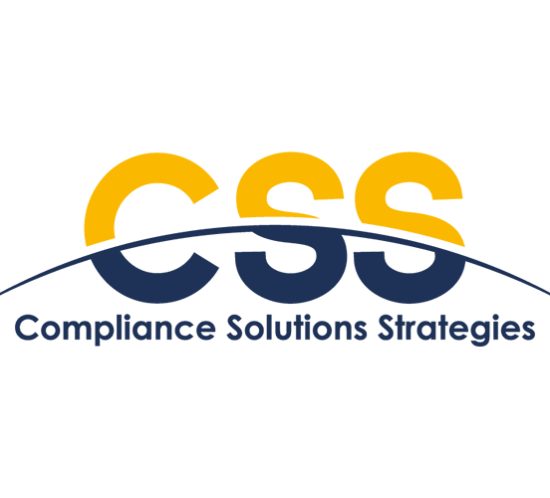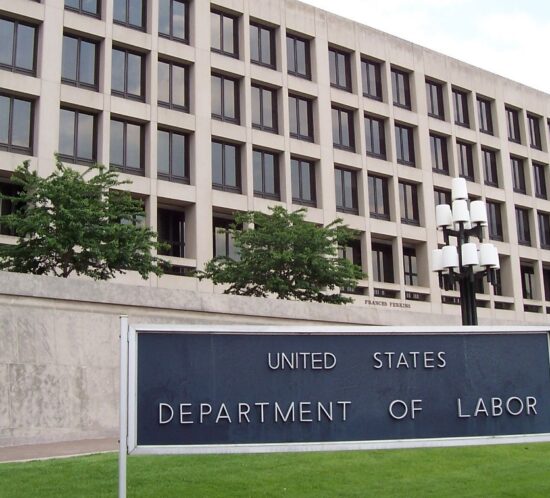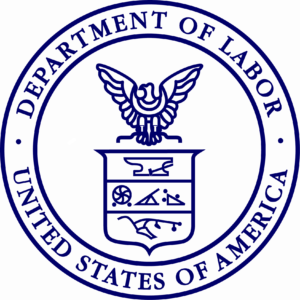The Perils of ‘End-to-End’ Solutions to SEC Reporting Modernization That Don’t Go From End-to-End
One of the common idioms here in the US that my European colleagues may not be familiar with is “soup to nuts,” meaning from beginning to end. As I sat down to write this piece for the Accudelta blog, it jumped out at me that one of the biggest risks that the mutual fund industry is taking right now is the assumption that their service providers’ “full” solution to Form N-PORT does actually include soup and nuts.
There is no doubt that for many firms that have historically partnered with one of their service providers for regulatory reporting, their first port of call will of course be to look to them to solve next year’s SEC Reporting Modernization challenge. The difference with this regulation can be highlighted in two key points in my view:
- There is a huge increase in the amount of data that is required and needs to be managed, and not all of this (typically less than 70%) sits with the service provider today
- The increase in reporting frequency from quarterly to monthly compresses the available time for data processing and compliance signoff by a factor of three
 In other words, there is a lot more data that needs to be sourced and managed, and that all needs to be turned around and signed off in 30 days instead of 90. This is a significant technical and operational challenge.
In other words, there is a lot more data that needs to be sourced and managed, and that all needs to be turned around and signed off in 30 days instead of 90. This is a significant technical and operational challenge.
It strikes me that too much conversation is being spent talking about liquidity and filing, when in reality these elements are soluble in a straightforward manner and will be part of the “entrée” of any solution.
The heavy lifting comes outside of this, and here it would very much appear that service providers are either grossly underestimating or downplaying the complexities associated with the data management and signoff challenges above – when push comes to shove, the mutual fund complexes are going to have to solve these problems themselves outside of the “complete” solution that their service provider has kindly served up.
Data management is more than accepting data in a number of templates or formats; the workflow around data aggregation, validation, and quality control to ensure that the information being filed is up-to-date and accurate is complex and requires a technical (and operational) solution that is designed for this purpose.
Likewise, to enable efficient signoff of the actual form before it is filed – technology needs to be employed to make this process as streamlined as possible – mutual fund complexes should not be left with a pile of paper and highlighter pens.
If you are looking to address the Reporting Modernization challenge, I would urge you to invest the time now to thoroughly understand how the above will be addressed in your proposed solution and target operating model. Use demonstrations and proofs of concepts now as tools to ensure that you are not left scrambling to prepare soup at the last minute – promises of future capabilities are not good enough; these capabilities need to be in place today.
For many fund complexes the data challenge above is significant – this work needs to be happening right now.
By 2018, it will be too late for complaints.
Guest Post written by Accudelta Managing Director Conor Smyth.
Accudelta, like Ascendant, is part of Compliance Solutions Strategies, a leading provider of technology-enabled regulatory and compliance solutions to the financial services industry.
How Private Fund Advisers Should Assess the New DOL Rule
Many private fund advisers are wondering: How does the DOL Rule apply to my business? Why does it apply to my business?
The DOL Rule that went into effect on June 9, 2017 was intended to require those providing advice to certain investors to do so using a fiduciary standard of care.[1] While arguably the biggest impact of the Rule falls on broker-dealers and investment advisers with retail clients, advisers to private funds may also be affected. The Rule has implications for private fund advisers that accept IRA and/or ERISA Plan investors, regardless of whether the private fund is considered to hold “plan assets.”[2] While such advisers already must adhere to a fiduciary standard to their clients (here, private funds), the Rule regulates, among other things, when that private fund adviser may additionally become a fiduciary to the fund’s IRA and/or ERISA Plan investors.
 To the extent the Rule may apply, the adviser may be limited in the way it can market investment products (i.e., interests in the private investment funds) to current and prospective IRA and ERISA Plan investors. The concern is that marketing communications, routine performance reporting, and other communications might cause the private fund adviser to become an ERISA fiduciary with respect to a decision by the IRA or ERISA Plan investor to invest in, continue holding, or redeem a private fund interest.
To the extent the Rule may apply, the adviser may be limited in the way it can market investment products (i.e., interests in the private investment funds) to current and prospective IRA and ERISA Plan investors. The concern is that marketing communications, routine performance reporting, and other communications might cause the private fund adviser to become an ERISA fiduciary with respect to a decision by the IRA or ERISA Plan investor to invest in, continue holding, or redeem a private fund interest.
For example, under the Rule, for hedge funds, it is possible that regular and course-of-business investment communications, such as quarterly investor letters, could be viewed by regulators as a “recommendation” or “advice” to continue holding an interest in the fund, thereby triggering the Rule requirements to document that the adviser is acting with a fiduciary standard of care or “in the best interests” of the IRA or ERISA plan investor. As another example, under the Rule, for private equity advisers in or about to be in fund-raising, communications to existing investors (in a prior, closed fund) could potentially be seen as “recommendations” or “advice” to invest in the new fund.
Ascendant recommends private fund advisers review and monitor their communications and practices, particularly where the type or stage of the fund triggers potential application of the Rule.[3]
Extension of Fiduciary Relationships to Fund Investors
The Rule can extend the fiduciary relationship to the fund’s underlying IRA and/or ERISA Plan investors. Essentially, the DOL expanded the concepts of what is fiduciary investment advice and/or a recommendation.[4] As a result, private fund advisers marketing investment products (fund interests) to IRA or ERISA Plan investors may now have to evidence and document that they are acting with a fiduciary standard of care in recommending such products to such investors. There are carve-outs to the Rule.
Impartial Conduct Standards
During the Transition Period, from June 9-December 31, 2017, fiduciaries who cannot take advantage of a carve-out must meet the “impartial conduct standards.”
The “impartial conduct standards” require fiduciaries to meet three requirements:
1) the fiduciary must give advice in the investor’s “best interest,” which means advice must be prudent, meet professional standards, and be based on the best interest of the investor and not on any competing interest of the fiduciary;
2) the fiduciary must charge no more than reasonable compensation; and
3) the fiduciary must not make any misleading statement (which includes material omissions) about transactions, compensation, or conflicts of interests.
Carve-Out for IRA/ERISA Plan Investors advised by an Independent Fiduciary
The Rule provides a significant carve-out for certain IRA and/or ERISA Plan investors. If the investor fits within this carve-out, the private fund adviser will not be considered a fiduciary to that investor.
For example:
- An investor separately represented by an independent fiduciary that is a bank, insurance company, other registered investment adviser, or registered broker-dealer may satisfy the carve-out.
- An investor represented by some other independent fiduciary may satisfy the carve-out, provided the independent fiduciary has under management or control at least $50 million in total assets, e.g., an institutional ERISA Plan represented by its independent plan committee managing or controlling at least $50 million in total plan assets.
The private fund adviser must know or have reasonable belief that the independent fiduciary is capable of independently evaluating investment risks and is actually exercising that independent judgement.
What should private fund advisers do to comply with the new DOL Rule?
 Identify IRA and ERISA Plan Investors
Identify IRA and ERISA Plan Investors
First, all private fund advisers should identify any IRA and ERISA Plan investors in their private fund(s). Private fund advisers in the process of fund-raising or onboarding new investors must identify the potential IRA and ERISA Plan investors.
Notice to Existing IRA and ERISA Plan Investors
Second, once investors are identified, private fund advisers should determine if a carve-out applies.
Advisers to funds that offer redemption or withdrawal rights (as opposed to private equity funds that do not) should confirm eligibility for the above carve-out by sending the identified IRA and ERISA Plan investors a written disclosure notice that requires the investor to make the representations that are the elements of the carve-out.[5]
Disclosure to the investor must state:
- the adviser is not undertaking to provide to the investor impartial investment advice or to act in a fiduciary capacity to the investor regarding the investment,
- the adviser has a financial interest in the equity interests of the private fund,
- the adviser’s interests in the private fund may conflict with the investor’s interests, and
- the adviser does not receive fees from the investor for the provision of investment advice to the investor, but rather for the advice to the private fund.
Representations from the investor must include:
- the investor is represented by an independent fiduciary (under ERISA and/or the IRS) that is either:
- a bank, insurance carrier, registered investment adviser, or registered broker dealer; or
- an independent fiduciary that holds, or has under management or control, total assets of at least $50 million,
- the independent fiduciary is also independent from the private fund adviser, and
- the independent fiduciary is capable of evaluating investment risk independently, generally and regarding the private fund investment.
Private fund advisers with new or contemplated future funds or investors should determine if updated subscription documents language is required, and amend it as necessary to reflect the aforementioned disclosures and investment representations.
Private fund advisers who do not receive adequate assurance from the IRA or ERISA Plan investors, but who want or need to keep them in the existing fund, should consider limiting their communications so that the communications are not misconstrued as “recommendations.” For example, such advisers could provide little or no fund or market commentary, and provide only factual performance, fee, and expense information; and/or they could include a legend or disclaimer on all communications, providing information similar to the language in the above-described notice. Private fund advisers in fundraising or about to start a new fund may want to consider refusing investors if, after working with legal counsel on the subscription documents language, they do not receive adequate investor assurances.
The DOL has stated that during the transition period, June 9-December 31, 2017, the DOL will not pursue enforcement claims against fiduciaries who are working in good faith to comply with the applicable terms. If you need help, contact Ascendant for further information on the DOL Rule and its application to your business.
[1] This Ascendant Guidance was not intended to be and cannot be legal advice. Please consult your legal counsel for all legal matters and interpretations. This is a summary of certain applications, and is not a complete recitation of the DOL Rule or its relevance.
[2] This includes investments by friends, family, and employee IRAs—unless all fees are waived.
[3] Advisers using co-investment structures similarly may want to review their practices relating to these co-investment or related investment vehicles.
[4] “Recommendation” is “a communication that, based on its content, context, and presentation, would reasonably be viewed as a suggestion that the recipient engage in or refrain from taking a particular course of action.”
[5] Advisers may prefer to use the negative consent method, which requires the investor to reply back to the adviser only if the investor is not able to make the representations. The ‘negative consent’ type notice should expressly delineate that the investor’s continued investment in the fund, and/or lack of redemption, constitutes agreement that such investor can make the representations necessary to remain eligible to continue as a fund investor.
Supreme Court Ruling Curbs SEC Disgorgement Power
The U.S. Supreme Court ruled on Monday that the SEC is bound by a five-year limitation period when it seeks disgorgement from those who have been found to violate federal securities laws.
The Court held that “Disgorgement in the securities-enforcement context is a ‘penalty’ within the meaning of §2462 [a five-year statute of limitations,]” and thus, “any claim for disgorgement in an SEC enforcement action must be commenced within five years of the date the claim accrued.”

U.S. Supreme Court (Photo Credit – Joe Ravi CC-BY-SA 3.0)
Section 2462 expressly applies to “an action, suit or proceeding for the enforcement of any civil fine, penalty, or forfeiture, pecuniary or otherwise” and the Court had already held that the five-year statute applies when the SEC seeks statutory monetary penalties.
The Court’s reasoning included that SEC disgorgement is imposed as a consequence for violating public laws; the violation for which the SEC seeks disgorgement is against the United States rather than an aggrieved individual; SEC disgorgement furthers the policy mission of “protecting investors and safeguarding the integrity of the markets[;]” SEC disgorgement is imposed to deter infractions and, therefore, is “inherently punitive[;]” and SEC disgorgement—“in many cases”—is not compensatory and can be required regardless of whether funds are used as restitution.
While the government argued SEC disgorgement is “remedial” in that it “restor[es] the status quo,” the Court disagreed, citing cases where defendants were ordered to disgorge third-party profits and without consideration of expenses that reduced illegal profits. “In such cases, disgorgement does not simply restore the status quo; it leaves the defendant worse off.”
The Court therefore found that SEC disgorgement operates as a penalty under §2462.
The Court reversed the judgment of the Court of Appeals for the Tenth Circuit. Justice Sonia Sotomayor delivered the opinion of the Court.
For a complete reading of this unanimous opinion, please click here.
ComplianceCast: Advice on Managing Due Diligence
 Your firm can outsource an activity to third-party vendors, but it still retains oversight responsibility. This ComplianceCast is designed to review industry practices pertaining to identifying and monitoring service providers. It will also address questions from compliance teams around the U.S. about developing and implementing a due diligence program through an active Q&A roundtable discussion.
Your firm can outsource an activity to third-party vendors, but it still retains oversight responsibility. This ComplianceCast is designed to review industry practices pertaining to identifying and monitoring service providers. It will also address questions from compliance teams around the U.S. about developing and implementing a due diligence program through an active Q&A roundtable discussion.
Ascendant’s due diligence experts Allison Fraser and Dianna Zentner discuss the following:
- Creating risk profiles for each service provider
- Initial due diligence of vendors
- Methods of monitoring existing of service providers
- Answers to your due diligence questions.
Download the ComplianceCast by filling out a request form.
DOL Fiduciary Rule Update
After months of delays, many in the industry have been watching to see how the Department of Labor’s Fiduciary Rule was going to land and in what form. Secretary of Labor Alexander Acosta’s op-ed in the Wall Street Journal on May 22, has brought some clarity, albeit perhaps temporary, to this administration’s plans.
Let’s step back – what is the Fiduciary Rule?
The rule essentially expands the definition of financial advisers with fiduciary duty under ERISA and imposes stricter regulations on their advisory relationships as they relate to retirees and retirement accounts. The definition of a fiduciary now includes any individuals receiving compensation for making investment recommendations to a retirement plan participant or owner of an IRA.
 Some in the industry are unsure of whether the rule will achieve it’s intended goals. Acosta writes, “the rule’s critics say it would limit choice of investment advice, limit freedom of contract, and enforce these limits through new legal remedies that would likely be a boon to trial attorneys at the expense of investors.” Proponents of the rule say that “if Secretary Acosta truly respects the will of the people, he will stand up to the industry lobbyists who want a fiduciary standard in name only, and he will proceed with implementation of a rule that puts real teeth into the best interest standard by making it legally enforceable and by reining in practices that encourage and reward advice that is not in customers’ best interests. That is what Americans saving for retirement expect and deserve.”
Some in the industry are unsure of whether the rule will achieve it’s intended goals. Acosta writes, “the rule’s critics say it would limit choice of investment advice, limit freedom of contract, and enforce these limits through new legal remedies that would likely be a boon to trial attorneys at the expense of investors.” Proponents of the rule say that “if Secretary Acosta truly respects the will of the people, he will stand up to the industry lobbyists who want a fiduciary standard in name only, and he will proceed with implementation of a rule that puts real teeth into the best interest standard by making it legally enforceable and by reining in practices that encourage and reward advice that is not in customers’ best interests. That is what Americans saving for retirement expect and deserve.”
As the different perspectives above might suggest, there has been a long history of stop and go with this regulation. After being actively worked on under the Obama administration, President Trump wanted his agencies to take a closer look; he signed a Presidential Memorandum directing the DOL to re-examine the rule shortly after he took office in February 2017. Following that, implementation of the rule was postponed from April 10 to June 9, 2017. The guidance recently issued by DOL clarifies that while some aspects of the rule (namely the Impartial Conduct Standards) will be applicable on June 9, there will be a transition period through December 31, 2017, after which firms will be expected to come into full compliance with the other aspects of the rule (including the full requirements of any Prohibited Transaction Exceptions).
What are the main elements of the rule?
All firms must comply with the Impartial Conduct Standards as of June 9, 2017. These are basically consumer protection standards which require applicable advisers to:
- Act in the client’s best interest
- Receive no more than reasonable compensation
- Refrain from making misleading statements
During the transition period, June 10 – December 31, 2017, firms should be working to come into compliance with the other components of the rule. Regulators have indicated they will not recommend enforcement to any firm who is making a good faith effort to comply.
Complying with the rule may mean making specific written disclosures and representations of fiduciary compliance in communication with investors. Much of this regulation is premised on the goal to reduce or eliminate (or at least make crystal clear to investors) where conflicts of interest exist with regards to adviser compensation for investment decisions in a retirement account. Generally the rule will prohibit an adviser making variable commissions, so they shouldn’t be able to make more or less money depending on which products the client agrees to buy.
There are three major exceptions to the standards of the Rule on which firms may be relying:
- Best Interest Contract Exemption: Relief for an adviser to still accept variable commissions
- Class Exemption for Principal Transactions: Relief for an investment adviser or broker dealer to still engage in a riskless principal or principal transaction (explained well by Mintz Levin here)
- PTE 84-24 (on Annuities): Relief for an adviser to still accept 3rd party payments for insurance products
All of the above are dependent on the adviser following the impartial conduct standards, making appropriate disclosures and maintaining proper documentation. Read more on exceptions from Davis Polk here. Barring any material changes to the rule, the requirements for these exceptions will be in effect January 1, 2018.
What does this mean?
On a practical level, this means you may want to:
- Look at your policies and procedures and ensure the impartial conduct standards are covered (and think about how you will evidence compliance with those standards)
- Begin documenting analysis supporting recommendations concerning IRA rollovers, which is a primary example of advisory recommendations not previously covered by the DOL fiduciary standard
- Think about training and communications to your staff to ensure they understand their responsibilities
- Make sure you are prepared to devote time in the later half of 2017 to DOL readiness activities, as updates to additional policies will likely be considered best practice even for fee level advisers
How can we help?
Ascendant Consulting Services
- Ascendant consultants can partner with firms to implement necessary policies and procedures for compliance with the DOL Fiduciary Rule
ACM
- Use ACM to update your risk matrix and controls
- Update your policies and procedures
- Distribute policies and training material to your employees and capture their attestation that they understand and will comply (we’re happy to help you create something)
Countdown to Ruin: Hacked Data Goes Public in As Little as Nine Minutes
How quickly do you think you can cancel your credit card in the event of a hack? In the time it takes you to reach the automated number and enter the right sequence of numbers and options, it may be too late.
Image: Max Pixel
According to a new alert from US-CERT (the Computer Emergency Readiness Team of the U.S Department of Homeland Security), nine minutes is all it takes for your compromised personal information to be widely accessible and for sale to the hacker universe, and for criminals to start trying to use your stolen information. If that information includes usernames and passwords that you use for multiple sites, are you confident that you could change the passwords to all those sites in under nine minutes? Chances are, you won’t even know your information has been hacked in the first nine minutes following the hack.
Your personal information, once hacked, is typically posted online in hacker forums and paste sites such as Pastebin. There, the data is quickly accessed by other criminals in as little as nine minutes, according to FTC researchers who conducted an experiment to track attempts to use stolen information.
Your account information by itself may be worth as little as $2, but it may be very valuable to criminals who can exploit the stolen information while it is still valid. And your information might be packaged with other compromised information in baskets of stolen data for sale – like an Amazon or eBay for hacked data – but accessible to criminals using specialized browsers such as Tor.
To mitigate the risk of identity theft, the FTC recommends using multi-factor authentication where feasible. Passwords are a typical form of single-factor authentication. Multi-factor authentication requires one or more additional pieces of information, such as a PIN or one-time code, to verify your identity. This also makes it more difficult for someone who has stolen your username and password to monetize or use that information effectively – because they do not have all the necessary pieces to be able to get into your account.








